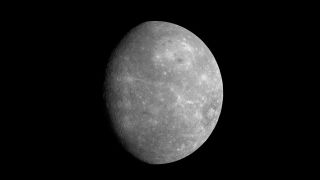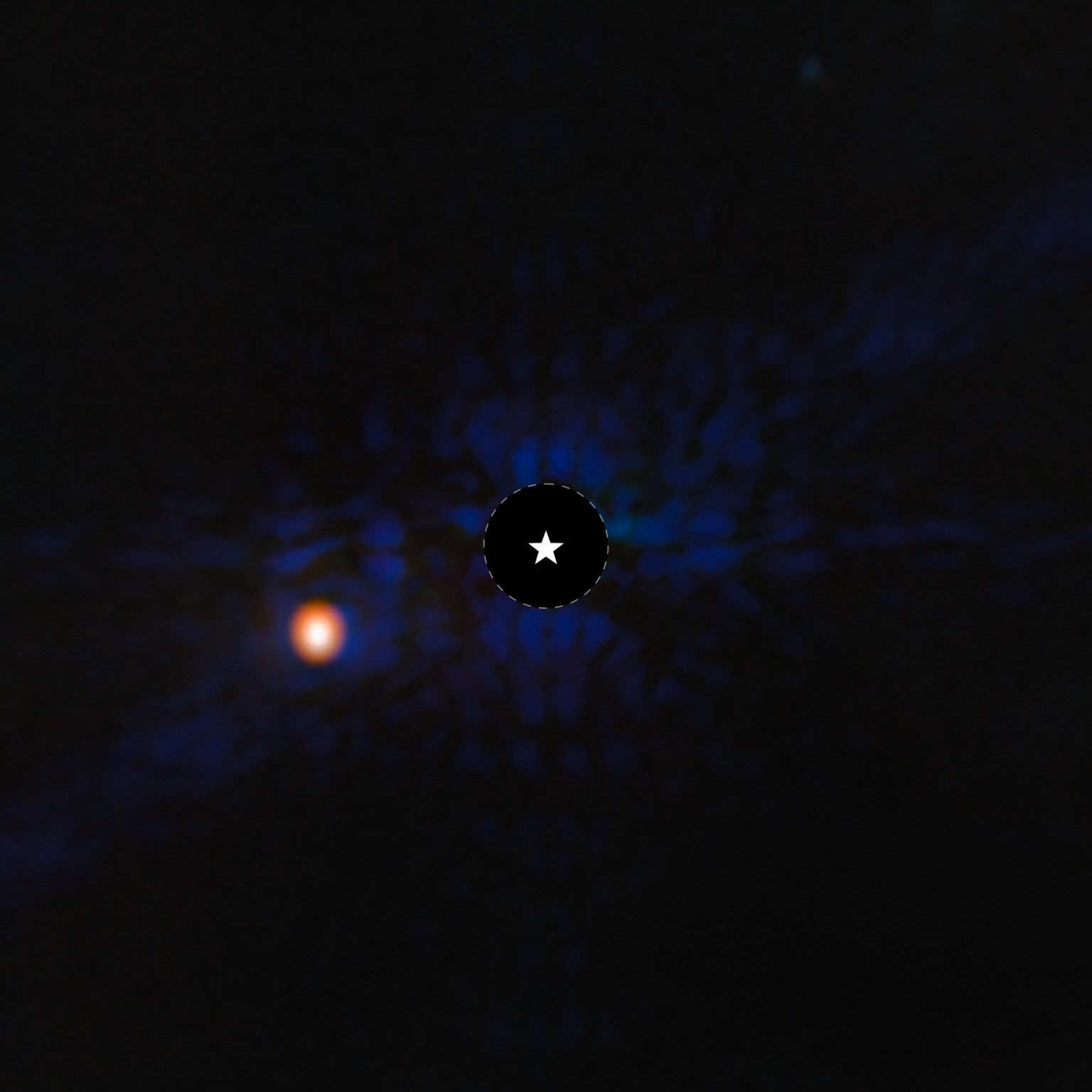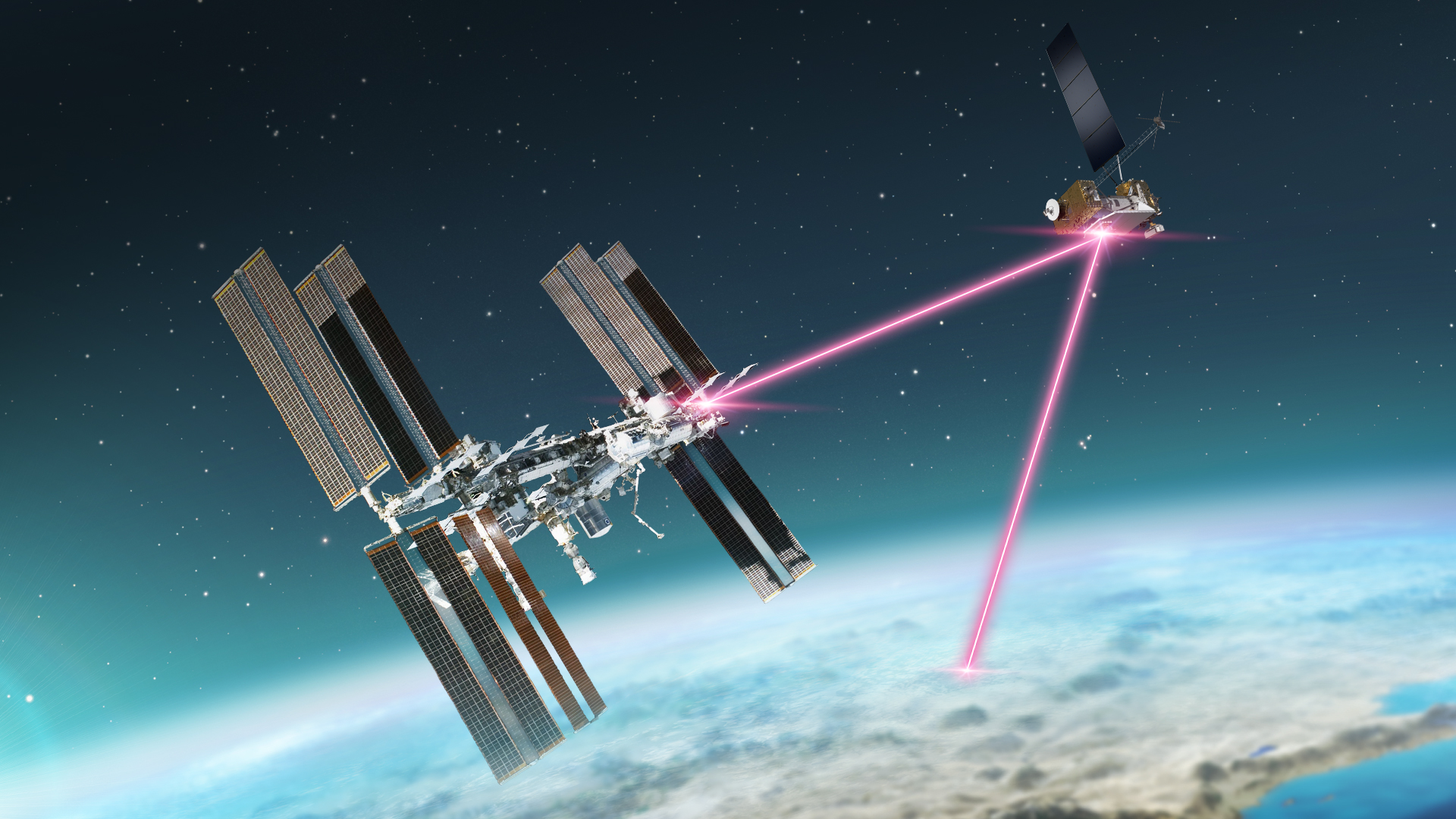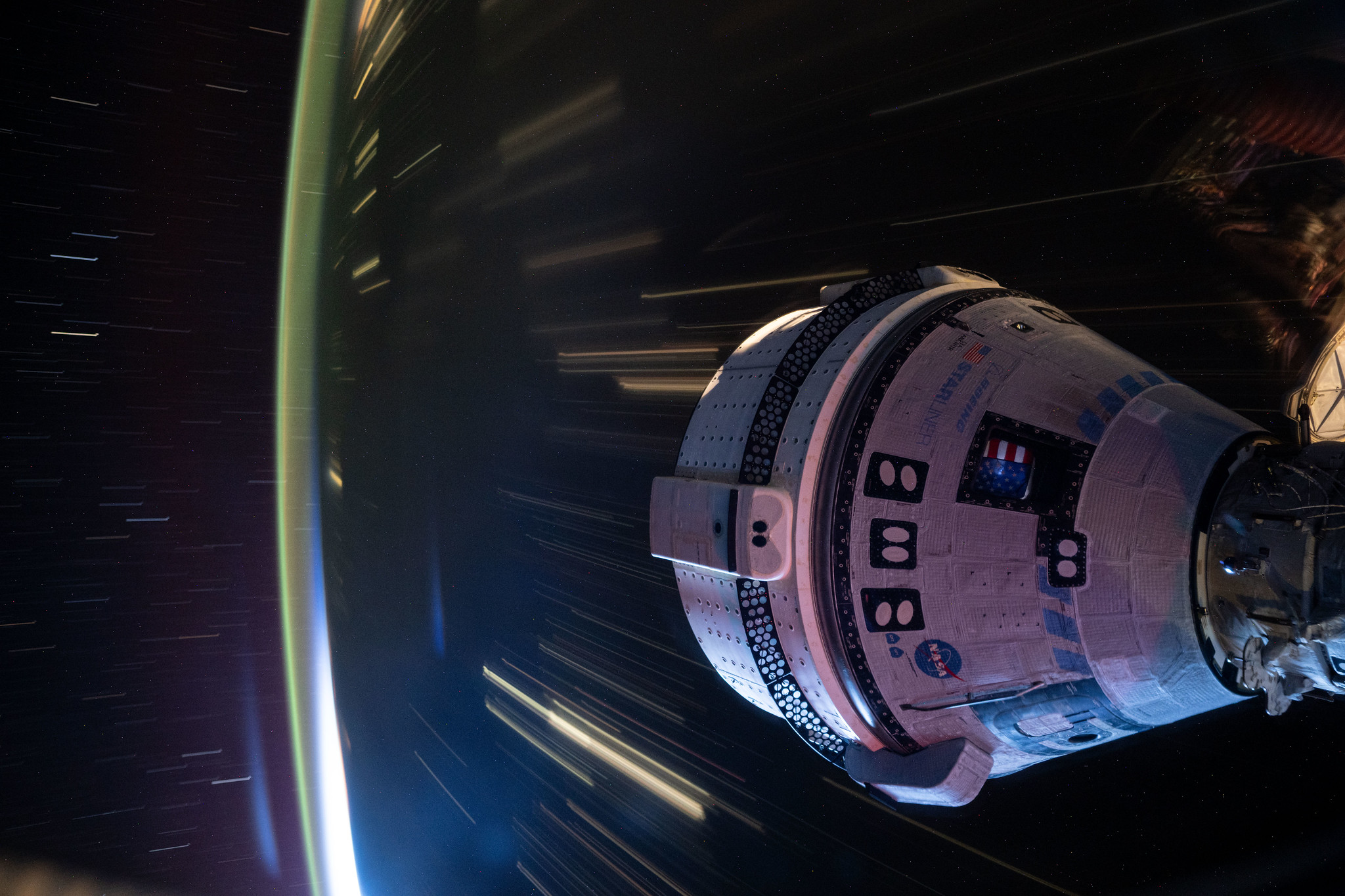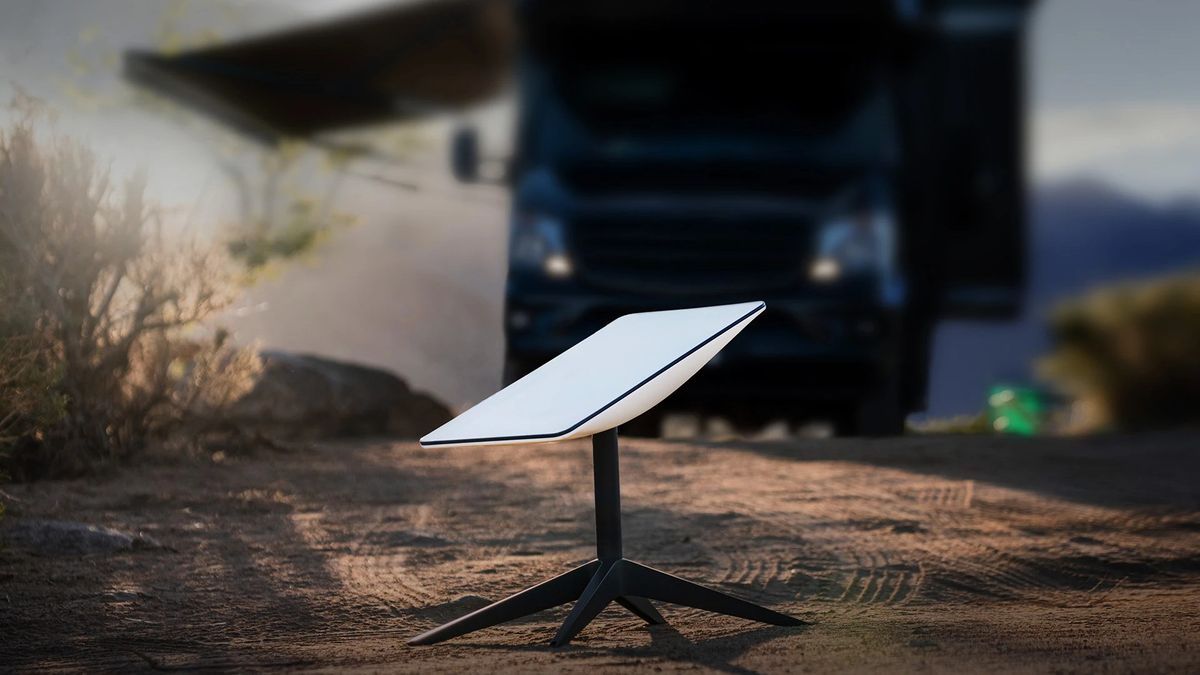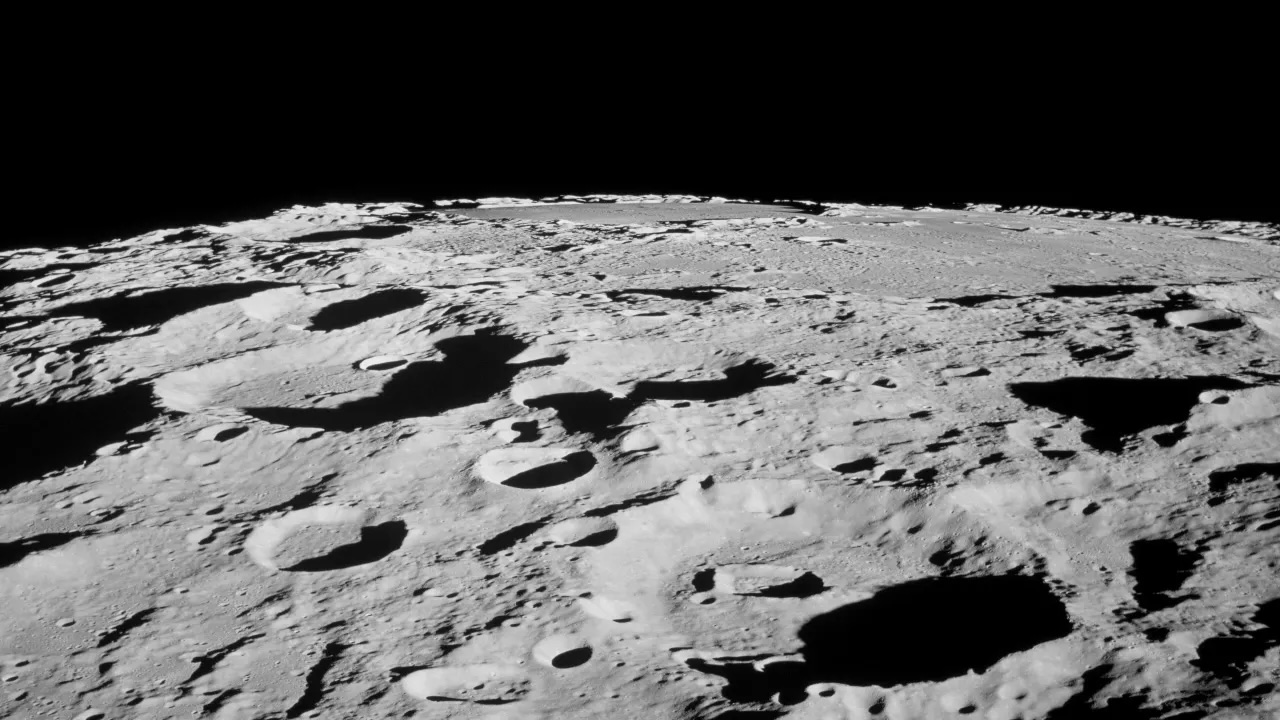The solar system’s tiniest planet may be hiding a big secret. Using data from NASA‘s MESSENGER spacecraft, scientists have determined that a 10-mile-thick diamond mantle may lie beneath the crust of Mercury, the closest planet to the sun. Mercury has long puzzled scientists as it possesses many qualities that aren’t common to other solar system planets. These include its very dark surface, remarkably dense core, and the premature end of Mercury’s volcanic era. Also among these puzzles are patches of graphite, a type (or “allotrope”) of carbon on the surface…
Read MoreMonth: July 2024
NASA’s Webb Images Cold Exoplanet 12 Light-Years Away
6 Min Read NASA’s Webb Images Cold Exoplanet 12 Light-Years Away This image of the gas-giant exoplanet Epsilon Indi Ab was taken with the coronagraph on NASA’s James Webb Space Telescope’s MIRI (Mid-Infrared Instrument). A star symbol marks the location of the host star Epsilon Indi A, whose light has been blocked by the coronagraph, resulting in the dark circle marked with a dashed white line (full image below) An international team of astronomers using NASA’s James Webb Space Telescope has directly imaged an exoplanet roughly 12 light-years from Earth.…
Read MoreEMD Climate Adaptation Video
To view this video please enable JavaScript, and consider upgrading to a web browser that supports HTML5 video EMD Climate Adaptation NASA/EMD
Read MoreNASA Streams First 4K Video from Aircraft to Space Station, Back
3 min read Preparations for Next Moonwalk Simulations Underway (and Underwater) A graphic representation of a laser communications relay between the International Space Station, the Laser Communications Relay Demonstration spacecraft, and the Earth. Credit: NASA/Dave Ryan A team at NASA’s Glenn Research Center in Cleveland streamed 4K video footage from an aircraft to the International Space Station and back for the first time using optical, or laser, communications. The feat was part of a series of tests on new technology that could provide live video coverage of astronauts on the…
Read MoreNASA Releases First Integrated Ranking of Civil Space Challenges
3 min read Preparations for Next Moonwalk Simulations Underway (and Underwater) NASA astronaut Kate Rubins uses a hammer to get a drive tube into the ground to collect a pristine soil sample during a nighttime simulated moonwalk in the San Francisco Volcanic Field in Northern Arizona on May 16, 2024. Surviving and operating through the lunar night was identified as a top-ranked 2024 Civil Space Challenge, and tests such as these help NASA astronauts and engineers practice end-to-end lunar operations. NASA/Josh Valcarcel This spring, NASA published a document overviewing almost…
Read MoreNASA, Boeing to Discuss Crew Flight Test Mission, Ground Testing
Boeing’s Starliner spacecraft that launched NASA’s Crew Flight Test astronauts Butch Wilmore and Suni Williams to the International Space Station is pictured docked to the Harmony module’s forward port. This long-duration photograph was taken at night from the orbital complex as it soared 258 miles above western China. Leadership from NASA and Boeing will participate in a media teleconference at 11:30 a.m. EDT Thursday, July 25, to provide the latest status of the agency’s Boeing Crew Flight Test mission aboard the International Space Station. Audio of the media teleconference will…
Read MoreSpaceX makes Starlink Roam available throughout the US
Your internet connection today is brought to you by space. No, that’s not an ad from a science fiction movie; it’s the reality now thanks to SpaceX‘s ever-growing constellation of Starlink satellites. In June, SpaceX introduced its new version of its satellite internet antenna, providing users the option to have an on the go service that’s the perfect size to throw in your backpack. Now, Starlink Roam is available anywhere across the United States, connecting customers in even the most remote locations with high-speed internet that can be accessed from…
Read MoreSpaceX wins $113 million contract to launch advanced NOAA climate satellite
SpaceX just added another mission to its already crowded launch manifest. Elon Musk‘s company won the launch contract for the U.S. National Oceanic and Atmospheric Administration’s (NOAA) JPSS-4 satellite. If all goes according to plan, JPSS-4 will lift off atop a Falcon 9 rocket from California’s Vandenberg Space Force Base in 2027. The firm, fixed-price contract is worth $112.7 million, “which includes launch services and other mission-related costs,” NASA officials wrote in an update on Monday (July 22). The JPSS (“Joint Polar Satellite System”) program is a cooperative effort of…
Read MoreNASA Sponsors New Research on Orbital Debris, Lunar Sustainability
3 Min Read NASA Sponsors New Research on Orbital Debris, Lunar Sustainability From lunar orbit, astronauts pointed cameras out the window of their spacecraft to capture photos of the moon's surface. Credits: NASA As part of NASA’s commitment to foster responsible exploration of the universe for the benefit of humanity, the Office of Technology, Policy, and Strategy (OTPS) is funding space sustainability research proposals from five university-based teams to analyze critical economic, social, and policy issues related to Earth’s orbit and cislunar space. The new research awards reflect the agency’s…
Read MoreAstronaut Eileen Collins, NASA’s First Female Shuttle Commander
Astronauts Eileen M. Collins, STS-93 mission commander, and Jeffrey S. Ashby, pilot, peruse checklists on Columbia’s middeck.
Read More